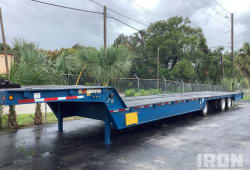Exploring the Depths: The Real Underwater Welder Life Expectancy
1 Min read
)
June 15, 2024
The life expectancy of an underwater welder is regularly anticipated to be between 50 and 55. It is substantially less than the everyday lifestyle expectancy for the general populace, around 78 years in many advanced global places. The extreme-danger nature of the activity is mixed with the bodily. Environmental challenges contribute to this reduced lifestyle expectancy.
Underwater welding is one of the most hazardous professions, and its associated risks affect life expectancy. Factors influencing the lifestyle expectancy of underwater welders include the following:
Decompression infection: Decompression contamination, also called "the bends," can cause severe fitness troubles if not managed properly.
Drowning: Despite extensive protection measures, such as the use of diving suits and regular tracking, the danger of drowning remains a considerable issue for underwater welders.
Electric surprise: The combination of strength and water is inherently risky.
Exposure to excessive strain: Long-term publicity can bring about numerous fitness problems and damage the hectic system and joints.
Accidents and injuries: Working in a challenging and often unpredictable environment, which includes a sudden trade in water strain or a malfunction in equipment, increases the chance of injuries and injuries.

Javier Bocanegra is Boom & Bucket's Technical Resolutions Lead, drawing on 10+ years in automotive and heavy equipment to diagnose issues, resolve complex post-sale cases, and keep machines - and customers - running smoothly. A certified heavy-equipment specialist, he's known for meticulous inspections and hands-on expertise across mechanical, electrical, and hydraulic systems. Based in Sacramento, Javier partners closely with buyers, vendors, and our field teams to deliver reliable outcomes and uphold our standards for safety and trust.



